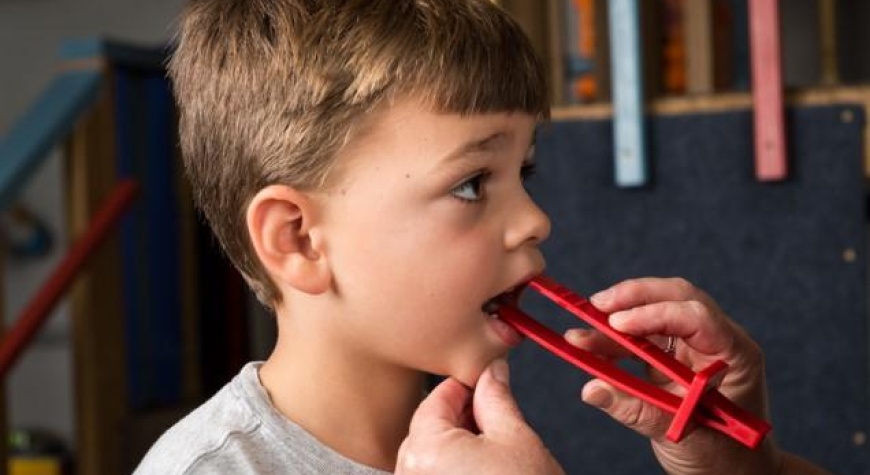Navigating Sensory Integration: An Informative Guide for Parents and Caregivers

As a parent or caregiver, you’re likely familiar with the concept of sensory integration, even if you haven’t heard the term before. It’s the process by which we receive information through our senses, organize this information, and use it to participate in everyday activities. Understanding sensory integration is crucial, especially when it involves the development and well-being of children. In this comprehensive guide, I aim to unravel the complexities of sensory integration, offering valuable insights and actionable strategies to support children who may be facing challenges in this area.
Introduction to Sensory Integration
Sensory integration is a term that is becoming increasingly prevalent in discussions about child development and learning. At its core, sensory integration refers to the way in which our nervous system receives messages from our senses and turns them into appropriate motor and behavioral responses. A child’s ability to successfully integrate sensory information affects their potential to learn and engage with the world around them.
For many children, sensory integration develops in the course of ordinary childhood activities. But for some, sensory integration does not develop as efficiently as it should. My interest in this field stems from my professional background in child development and my personal experiences as a parent. I’ve witnessed firsthand the impact of sensory integration on a child’s daily life.
The process of navigating sensory integration can be complex and, at times, overwhelming. However, with a deeper understanding of what it entails, we can better support the children in our care to navigate their sensory experiences effectively.
Understanding the basics of Sensory Integration
To truly support a child with sensory integration challenges, we must first grasp the basics of the process. Sensory integration involves three primary sensory systems: the tactile system (touch), the vestibular system (balance and movement), and the proprioceptive system (body awareness). These systems help children understand their bodies in relation to the environment and are crucial in developing everything from fine motor skills to social interactions.
When these systems work well, they help us respond to sensory information automatically and efficiently. For example, when we hear a loud noise, we might startle, and when we touch something hot, we automatically pull away. But for some children, these responses are not as seamless, leading to sensory integration dysfunction.
Through my journey into this field, I’ve learned that understanding these basic sensory systems is the first step in recognizing and addressing sensory integration issues in children. It allows us to see the world from their perspective and to begin to tailor our support to their unique needs.
The Importance of Sensory Integration in Child Development
Sensory integration plays a pivotal role in a child’s development. It is fundamental to how children learn about their environment and themselves. From the moment a child is born, they are bombarded with sensory experiences that they must learn to sort, prioritize, and understand. These experiences are the building blocks of cognitive development, emotional regulation, social skills, and motor abilities.
A well-functioning sensory integration system allows children to engage in complex learning tasks. It supports the development of attention, concentration, and self-regulation—all crucial skills for success in school and life. When children can effectively process sensory information, they are more equipped to handle the challenges of growing up and learning new skills.
My passion for child development has shown me just how critical sensory integration is for a child’s overall development. It influences their ability to form relationships, play, and eventually become independent individuals. Recognizing the importance of sensory integration is the first step in ensuring our children get the support they need to thrive.
Common Signs of Sensory Integration Issues
Identifying sensory integration issues is not always straightforward. The signs can be subtle and often overlap with other developmental concerns. However, there are some common indicators that parents and caregivers can look out for. These might include an over-sensitivity or under-sensitivity to sensory stimuli, difficulty with motor skills, or challenges in behavior and social interactions.
Children with sensory integration issues might react strongly to sounds that others barely notice, or they might not react at all to things that would typically cause discomfort, like a scratchy label on clothing. They may also appear clumsy, have trouble with tasks requiring fine motor skills, or display behaviors that seem out of proportion to the situation.
In my experience, it’s crucial to observe a child’s reactions in various settings over time. This can provide valuable clues about their sensory processing and whether they may benefit from additional support. Understanding these signs is the first step toward helping a child navigate their sensory world more effectively.
The Role of Parents and Caregivers in Sensory Integration
As parents and caregivers, we play a vital role in supporting children with sensory integration challenges. Our job is to provide a nurturing environment that allows them to explore and make sense of their sensory experiences. This might involve adapting our homes to be more sensory-friendly or advocating for our children in educational and social settings.
One of the most important things we can do is to educate ourselves about sensory integration. This knowledge empowers us to recognize potential issues early on and seek the appropriate help. It also enables us to engage in conversations with professionals and educators, ensuring that our children’s needs are understood and met.
In my role as a caregiver and advocate, I’ve learned that patience, understanding, and creativity are key. By being attuned to a child’s sensory needs and responding with empathy and support, we can make a significant difference in their ability to process sensory information and interact with the world around them.
Strategies for Managing Sensory Integration at Home
Creating a supportive home environment is essential for children with sensory integration challenges. This involves being proactive in adapting your living space and daily routines to accommodate your child’s sensory needs. It could mean establishing quiet zones for a child who is easily overwhelmed by noise or ensuring there are opportunities for vigorous play for a child who seeks proprioceptive input.
Simple strategies, such as incorporating sensory breaks throughout the day or using weighted blankets for comfort, can be effective. Additionally, sensory-rich activities like playing with sand or putty can help children who need extra tactile feedback. It’s about finding what works for your child and being consistent with these strategies to provide a sense of security and predictability.
In my own home, I’ve seen the impact of these strategies on my child’s ability to cope with sensory challenges. By making small adjustments and being mindful of sensory triggers, we can help our children feel more in control and less anxious about their sensory experiences.
Navigating Sensory Integration in School and Social Settings
School and social settings present unique challenges for children with sensory integration issues. In these environments, children are often expected to adapt to the sensory demands placed upon them, which can be overwhelming. As parents and caregivers, we must work closely with teachers, school staff, and other adults in our children’s lives to create sensory-friendly environments and routines.
Advocating for accommodations such as preferential seating, the use of noise-canceling headphones, or allowing for movement breaks can make a significant difference in a child’s ability to learn and interact with peers. It’s also important to foster open communication with educators and caregivers about your child’s sensory needs and the strategies that work at home.
Through my collaboration with educators, I’ve learned that when adults in a child’s life are informed and cooperative, it becomes much easier to navigate sensory challenges in school and social settings. This collaborative approach ensures that children receive consistent support, allowing them to participate fully in their education and social development.
Resources and Support for Parents and Caregivers in Sensory Integration
Thankfully, parents and caregivers do not have to navigate the complexities of sensory integration alone. There are numerous resources and support networks available to help us understand and manage sensory integration issues. These may include books, websites, online forums, and local support groups where we can connect with others facing similar challenges.
Accessing these resources can provide valuable information and emotional support. They can also introduce us to new ideas and strategies that we may not have considered. In my search for resources, I’ve found that the most helpful ones are those that offer practical advice and real-life examples of how to support children with sensory integration challenges.
By tapping into these resources and support networks, we can gain the confidence and knowledge needed to advocate for and assist our children effectively. It’s about building a community that understands and supports the journey of navigating sensory integration.
Professional Help for Sensory Integration: Therapies and Interventions
When it comes to addressing sensory integration issues, professional help can be invaluable. Occupational therapists, in particular, are trained to assess and treat sensory integration dysfunction. They use a variety of therapies and interventions tailored to each child’s specific needs.
These therapies might include sensory integration therapy, which involves activities designed to challenge the child’s ability to respond appropriately to sensory input. There are also other interventions, such as the use of sensory diets—customized plans that incorporate specific sensory activities into a child’s daily routine.
Seeking professional help can be a game-changer for many families. As someone who has worked with occupational therapists, I can attest to the positive impact these therapies can have. Not only do they help children develop the necessary skills to manage their sensory experiences, but they also provide parents and caregivers with guidance and support.
Conclusion
Navigating sensory integration is an ongoing journey for many parents and caregivers. Understanding sensory integration and its impact on child development is the first step toward providing the best support for our children. By recognizing the signs of sensory integration issues, creating supportive environments at home and school, and accessing resources and professional help, we can empower our children to thrive despite the challenges they may face.
As we continue to learn and adapt, let us remember that each child’s sensory experience is unique. With patience, empathy, and a willingness to advocate for their needs, we can guide our children through the sensory world, helping them to develop the skills they need to succeed in all areas of life.

14 comments
Juandalynn Kilcline
May 5, 2024 @ 6:16 amJuandalynn Kilcline
Tyeesha Dillstrom
May 16, 2024 @ 4:27 pmTyeesha Dillstrom
Espanola Kanzenbach
May 19, 2024 @ 5:19 pmEspanola Kanzenbach
Uchechukwu Ouahabi
May 20, 2024 @ 9:27 amUchechukwu Ouahabi
Wilodyne Meverden
June 4, 2024 @ 9:50 amWilodyne Meverden
Ahadu Vatasoiu
June 11, 2024 @ 5:47 amAhadu Vatasoiu
Tyairah Sainz rozas
June 12, 2024 @ 3:07 pmTyairah Sainz rozas
Elyana Edin
June 19, 2024 @ 6:25 amElyana Edin
Leroya Brightwell
June 20, 2024 @ 4:39 pmLeroya Brightwell
Felix Meyer
July 16, 2024 @ 12:25 amWhat fabulous ideas you have concerning this subject! By the way, check out my website at Webemail24 for content about Blogging.
Seoranko
July 16, 2024 @ 10:50 amThank you for sharing this information! If you need some details about Professional Moving Services than have a look here Seoranko
Natalie Gay
August 15, 2024 @ 12:23 pmYour posts stand out from other sites I’ve read stuff from. Keep doing what you’re doing! Here, take a look at mine QU5 for content about about Cosmetics.
Verlene Chapman
August 23, 2024 @ 10:39 amI am genuinely thankful to the owner of this website for sharing his brilliant ideas. I can see how much you’ve helped everybody who comes across your page. By the way, here is my webpage YQ9 about Cosmetic Treatment.
panalowin
December 5, 2025 @ 10:36 pmGave panalowin a go and the site’s easy to use. Good selection of games keeps things interesting! Give it a whirl right here: panalowin.